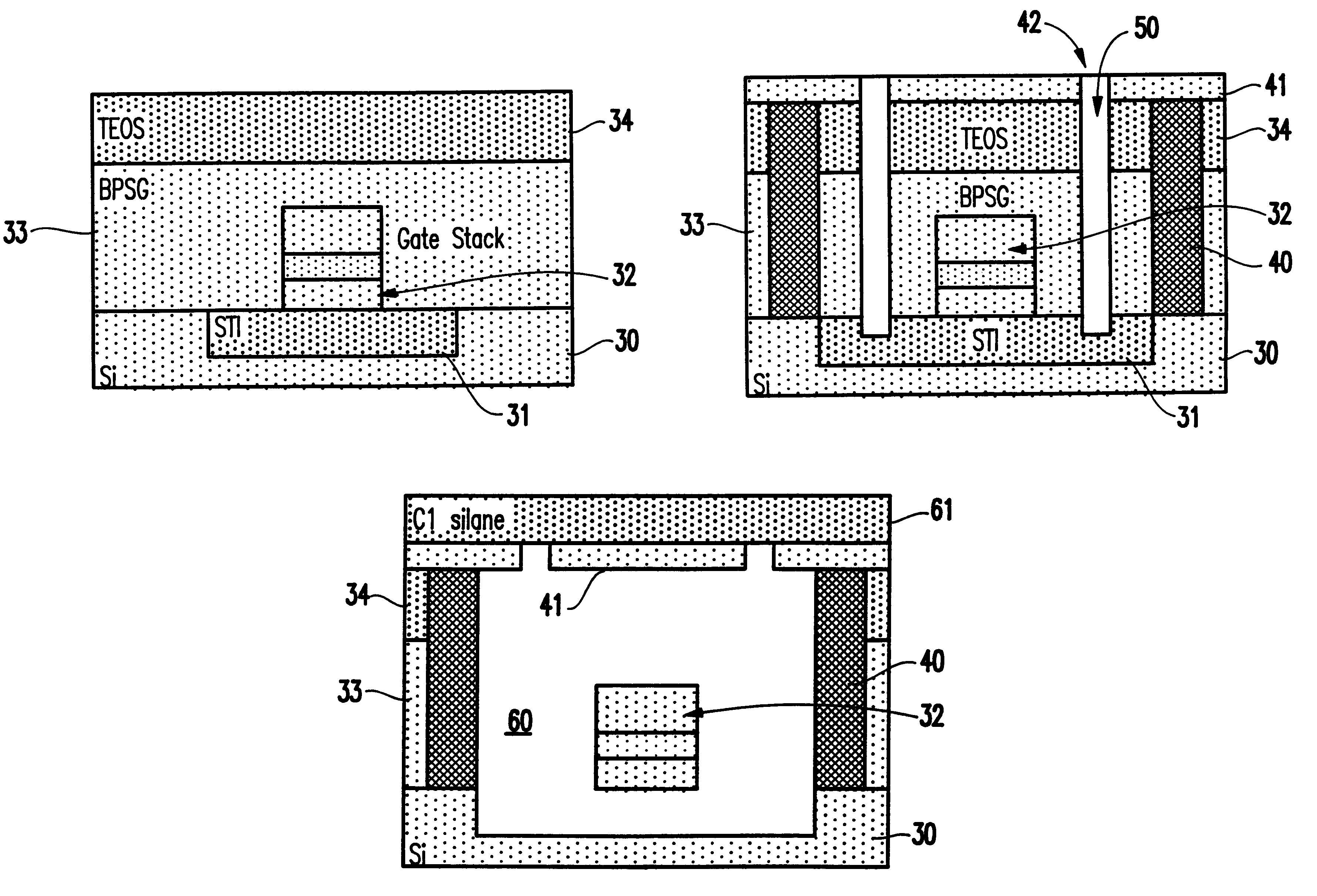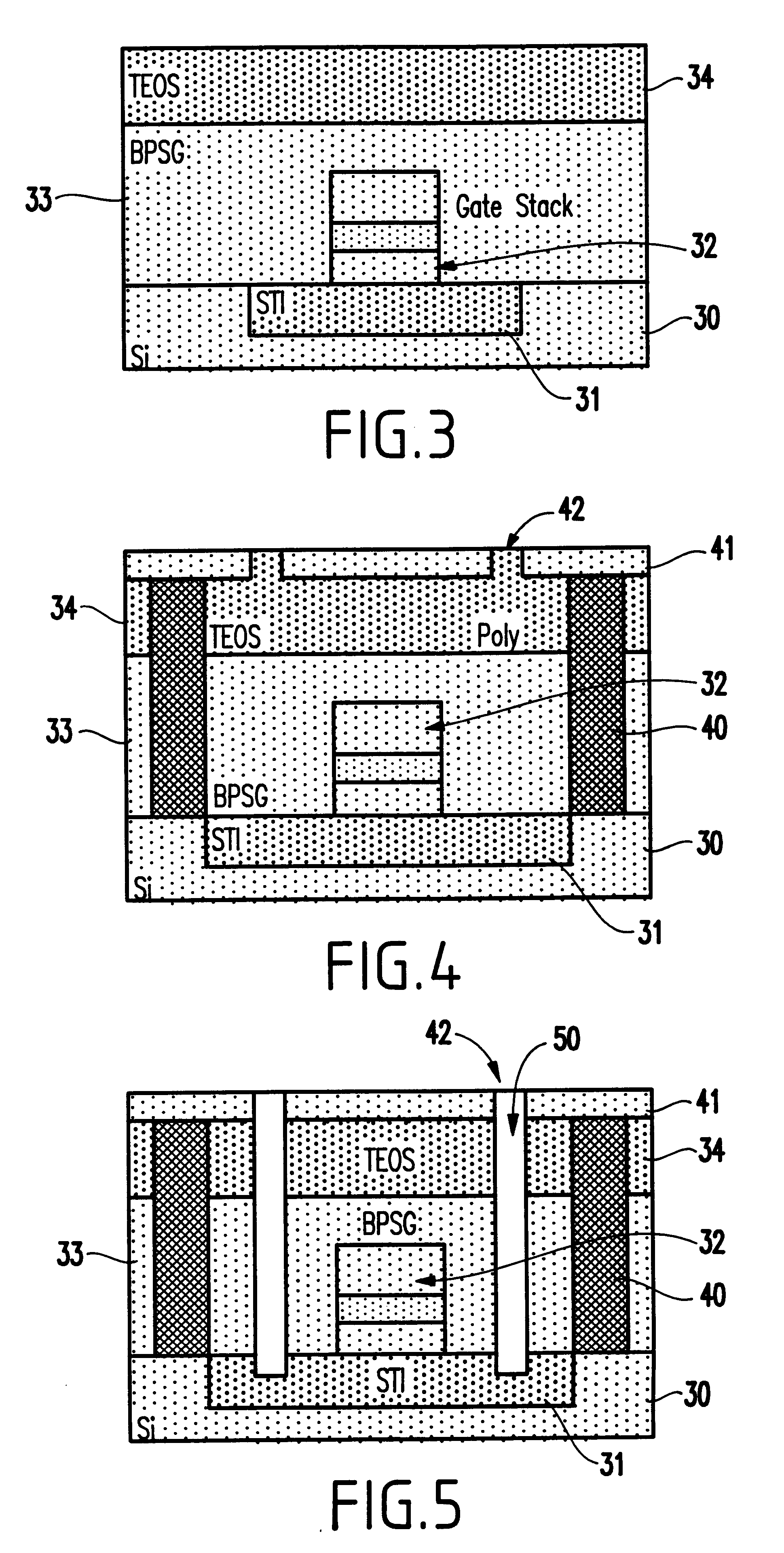Manufacturing of cavity fuses on gate conductor level
- Summary
- Abstract
- Description
- Claims
- Application Information
AI Technical Summary
Benefits of technology
Problems solved by technology
Method used
Image
Examples
Embodiment Construction
The invention, described in detail below, includes a unique method of forming a cavity around a gate conductor stack (which is utilized as a fuse link) and the associated unique structure. More specifically, with the invention wet etching of insulator layers surrounding the fuse link is performed through holes in the upper surface of the cavity region. This method simplifies the cavity formation process and allows much smaller integrated circuit features (such as gate stack structures which are utilized as fuse links) to include cavities.
Referring now to FIGS. 3-8, the method and structure of the invention will be explained in detail. More specifically, FIG. 3 illustrates a substrate 30 in which a shallow trench isolation (STI) region 31 has been formed. The substrate 30 could comprise any standard substrate, such as a silicon substrate and the shallow trench isolation region 31 could similarly comprise any conventional isolation material, such as tetraethylorthosilicate (TEOS), as ...
PUM
 Login to View More
Login to View More Abstract
Description
Claims
Application Information
 Login to View More
Login to View More - R&D
- Intellectual Property
- Life Sciences
- Materials
- Tech Scout
- Unparalleled Data Quality
- Higher Quality Content
- 60% Fewer Hallucinations
Browse by: Latest US Patents, China's latest patents, Technical Efficacy Thesaurus, Application Domain, Technology Topic, Popular Technical Reports.
© 2025 PatSnap. All rights reserved.Legal|Privacy policy|Modern Slavery Act Transparency Statement|Sitemap|About US| Contact US: help@patsnap.com



